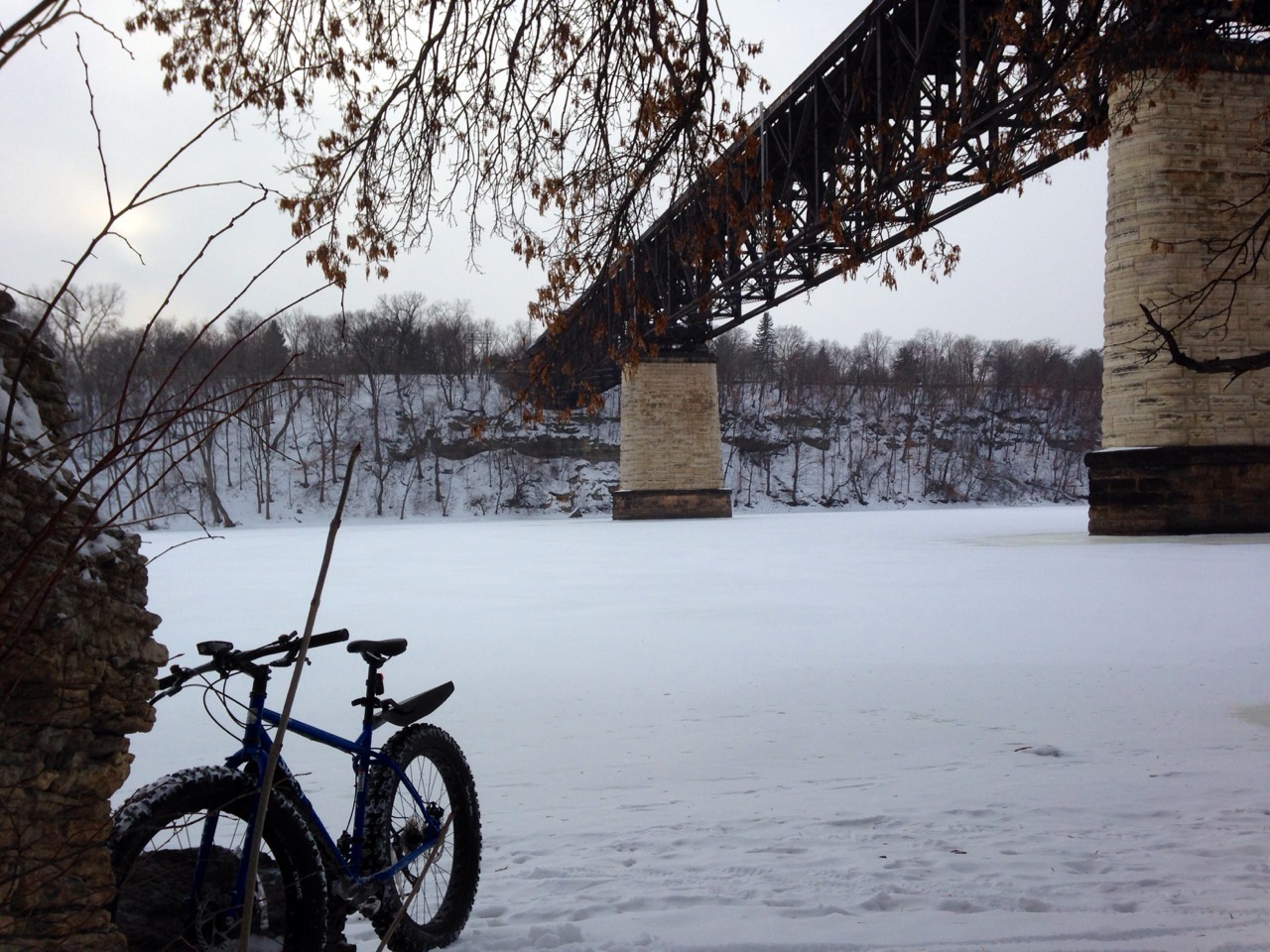When I joined the Freewheel team last summer, I knew that it would be especially hard for me to resist the allure of fat bike season once winter came. Now that I was working at one of the nation’s top fat bike retailers, I was surrounded by them, in more varieties than ever—our shop carries Trek’s new Farley, Salsa’s aluminum and titanium Mukluks, the super-wide Surly Moonlander, and the breathtakingly light Borealis Yampa and Salsa Beargrease carbon models. (“A carbon fat bike?” marvels every single person who enters our store.) And, of course, the stalwart Surly Pugsley, which kicked things off back in 2005 as the first retail fat bike.
Less than a decade later, the skyrocketing popularity of fat bikes is well-documented and nowhere more visible than the Twin Cities, where fat bike manufacturers are headquartered and hundreds of them roll out of our three Freewheel locations every season. Plenty of people even bought them during the summer, heading for the MTB trails. We are reaching Peak Fatbike, not just among trail enthusiasts, but with everyday commuters, as more brands make them and they become more affordable. (You know a trend has moved from the fringe to the mainstream when the local news covers it and Wal-Mart gets in on the act.)
I’ve been a winter bike commuter for years, and I still believe that nothing will get you through a Minnesota winter like a dependable old frame with studded tires, fenders, and platform pedals. But if you want more stability and relish the thought of an off-road adventure on your way home from work, you should consider a fat bike.
I was still on the fence about fat bikes when I winterized my single-speed Surly Steamroller in November. Then Freewheel held its Winter Bike Expo, and I spent two days watching Pugsleys, Moonlanders, Beargreases, and Mukluks roll out of our Midtown location and onto the course we’d set up on the Greenway. Maybe I lingered a little too long next to the Dillinger tires and Wölvhammer boots, or just saw too many ecstatic, rosy-cheeked customers return from their demo rides, but I eventually drank the metaphorical Kool-Aid by demoing a Pugsley on the course. I knew it was going to be fun, but nothing compares to the sensation of actually clearing a four-foot ramp or bombing down a big hill—using a bike to do something previously reserved for snowboarders. I was instantly hooked, and the Expo gave hundreds of others that conversion experience along with me. I purchased a Pugsley in “Real Blew” later that week.
Cyclists often describe the appeal of winter biking by invoking the intrepid spirit of arctic explorers and astronauts, striking out into inhospitable environments decked head-to-toe in funny-looking clothing, wearing big boots and facemasks. People who make fun of us or call us crazy for riding through winter probably haven’t felt the ways that riding in these conditions amplifies the usual mental and physical benefits of cycling: your heart beats faster, your body gets warmer, and you get out of the house, undaunted by the snow and cold. Fat bikes take these sensations to the next level by giving you added confidence on various terrain and the knowledge that you can hop that pile of snow at the next intersection if have (or want) to. You’re getting a great workout, combating Seasonal Affective Disorder, raising your body temperature far higher than you would driving or taking the bus, and having a blast in a climate most people flee by staying indoors or leaving the state altogether. You’re a superhuman James Cook/Neil Armstrong badass.
Of course, riding a fat bike doesn’t make you invincible, and there are some peculiarities to the machine that take some getting used to. For one, you’re not going to go as fast on pavement as you would on any other bike, especially if you keep your tires inflated at the extremely low (5-10 psi) recommend pressure. You’ll also probably be in the low gears for most of your ride, but that’s great news for your cardio workout! Fat tires sometimes have less traction than you’d expect, and can wash out on the mashed-potato slush that fills the streets after the plows have come through. Studded Dillinger tires can help with this and bestow upon your bike something approaching invincibility.
So, do you absolutely need a fat bike? Probably not. Do you want one? Definitely probably. My winterized Steamroller will get me from point A to B, but on the days when I have time to kill before or after work, or on weekends when I want to hit the trails, I’m glad I’ve got my Pugsley. A few weeks ago, grappling with cabin fever, I left for work a couple hours early and rode down to the East River Flats. I followed a trail that cross-country skiers had packed relatively firm, occasionally venturing out onto the ice, stopping every now and then to take in the scenery and be grateful that I had such ready access to the country’s mightiest river and the quiet that I relish so much during a winter ride. I was a couple miles downtown and just down the hill from the U of M campus, but it felt like I was in the middle of nowhere. My cabin fever was gone; I felt physically and mentally restored. That’s a feeling you can’t put a price on, but it’s got to be worth at least as much as my Puglsey.

